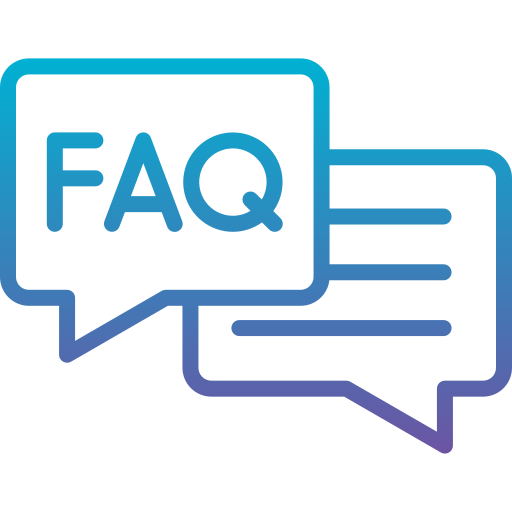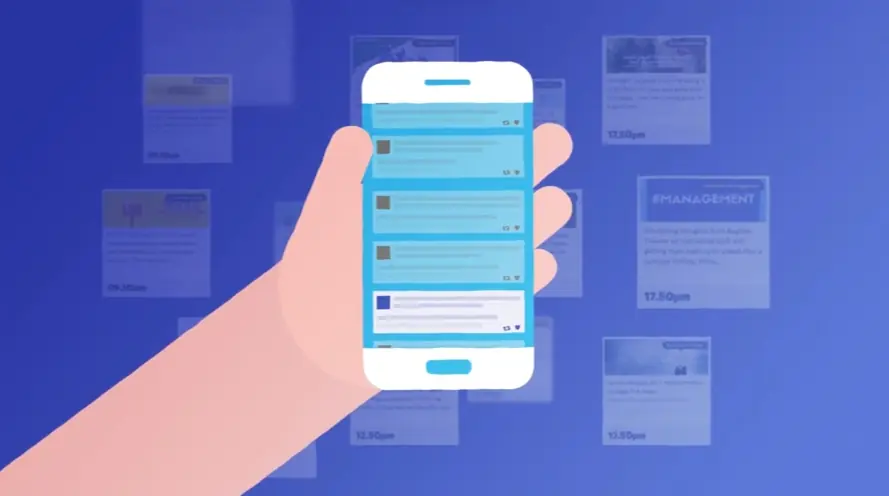
How can app onboarding videos improve user activation?
Onboarding videos boost user activation by showcasing key features, driving engagement, and reducing churn. A well-crafted video can significantly improve user retention and satisfaction.
What makes an effective app onboarding video?
Effective onboarding videos are concise, visually appealing, and clearly communicate the app's value. Focus on benefits, not just features.
How do top apps use video for onboarding?
Top apps use video onboarding to highlight key features, demonstrate functionality, and guide users seamlessly. This creates a positive first impression and encourages continued use.
What narrative best explains app features concisely in onboarding?
A problem-solution narrative effectively explains app features by showcasing how the app addresses user pain points. This approach makes the value proposition clear and relatable.
How can I leverage existing assets for a cohesive onboarding video?
Leverage existing assets like logos and color palettes to create a cohesive and on-brand onboarding video. This reinforces brand identity and creates a consistent user experience.
What onboarding video style resonates most with my target audience?
The ideal onboarding video style resonates with your target audience and aligns with your brand. Consider demographics, preferences, and industry trends.
What's the ideal length for an app onboarding video?
Aim for an onboarding video under 60 seconds to maintain user engagement. Concise videos deliver key information effectively without overwhelming viewers.
What are common onboarding video mistakes when showcasing app features?
Common onboarding video mistakes include information overload, jargon, and neglecting the app's value. Focus on clarity, conciseness, and user benefits.
How can an onboarding video clearly communicate my app's value?
Clearly communicate your app's value by focusing on the benefits it provides and addressing user needs. Show how your app solves problems and improves their lives.
How can storytelling enhance emotional connection during app onboarding?
Storytelling creates relatable scenarios, showcasing the positive impact of your app and fostering emotional connection. This builds user loyalty and encourages long-term engagement.
How can animation explain complex app features in onboarding?
Animation effectively explains complex app features by visually demonstrating functionality and simplifying intricate concepts. This enhances understanding and reduces cognitive load.
How can I best showcase UI elements in an app onboarding video?
Showcase UI elements through screen recordings and interactive demos. This allows users to visualize the app's interface and understand its functionality.
How can an onboarding video drive immediate app usage?
Drive immediate app usage with clear calls to action, guiding users to key features. Encourage exploration and prompt users to take the next step.
Why use professional voiceovers in app onboarding videos?
Professional voiceovers enhance clarity, professionalism, and engagement. A clear and engaging voiceover adds credibility and improves the overall viewing experience.
How can interactive elements boost engagement in app onboarding?
Interactive elements like quizzes and clickable demos boost engagement and encourage active participation. This creates a more immersive and memorable onboarding experience. Typical pricing for a 60-second video ranges from $1000-$6000, depending on complexity. Turnaround time is typically 3-8 weeks.
Measuring Success: Key Video Onboarding Metrics
Once teams perfect the engaging and accessible aspects of their App Onboarding Video efforts, quantifying their true impact becomes the next crucial step. Simply creating compelling video experiences is not the end; we must understand precisely how they guide new users toward becoming active, successful product users. This demands shifting focus from production quality to performance data, analyzing how user interaction with the video translates into desired outcomes within the app itself. Metrics illuminate the path forward, showing if the video effectively bridges the gap between initial interest and sustained value realization.
Measuring this success involves tracking specific video-centric data points. These numbers reveal how well the video captures attention and holds interest. While total views offer a starting point, delving deeper means examining data points like watch duration or video completion rates. Analyzing where users drop off indicates confusing moments or sections where the message loses impact. Tracking interactions with embedded elements or calls to action provides further insight into direct user response. These granular video analytics form the foundation for assessing content effectiveness and pinpointing areas needing refinement.
Leveraging video performance insights allows correlation with critical user journey metrics. This linkage paints a comprehensive picture of the video's influence on conversion and retention funnels.
Track the activation rate, measuring percentage of users who complete essential setup tasks after watching the video.
Monitor time to value, assessing how quickly users achieve meaningful product success post-video viewing.
Analyze support ticket volume specific to features covered in the video, highlighting potential content gaps needing clarification.
Utilizing these intertwined metrics empowers continuous optimization of onboarding videos, ensuring they effectively foster user success and cultivate a loyal community.
How app onboarding video examples is curated?
We dove deep into app onboarding videos, curating an insightful resource guided by an 8-parameter framework:
Our 8-Parameter Curation Framework
1.Relevance Authentic app onboarding videos showcasing real-world applications.
2.Diversity Showcasing diverse visual styles, industries, and target audiences for inspiration.
3.Engagement Analyzing audience response, information design, 10-second litmus test.
4.Visual Design Evaluating aesthetics, clarity, effectiveness of visuals.
5.Narrative Structure Assessing storyline clarity, flow, message effectiveness.
6.Call to Action Examining call to action strength, clarity, and effectiveness in driving app downloads or sign-ups.
7.Brand Alignment Determining video alignment with brand message, identity, and app's core functionality.
8.Performance Metrics Utilising VidIQ to assess watch time, audience retention.
A team of video designers, video marketers, and digital content experts collaborated with lead editor Orko to ensure diverse, adaptable examples, moving beyond the repetitive.
Updated October 15th, 2024, this collection is constantly refreshed with new examples meeting high standards, featuring styles like:
1. Animated Explainers
2. Product Demos
3. Customer Onboarding
4. Technical Walkthroughs
5. UI Demo Animations
0.22% of videos are featured in this blog. With only 3.5% videos meeting the visual design parameter.
Advids
Source: Advids/Youtube, app onboarding video examples 2024, n=13500 videos within duration <3 mintues, across industries.
Integrating User Feedback into Your App Onboarding Video
Building upon our understanding of onboarding video styles, let's explore how user feedback can transform these videos from informative to truly engaging. User feedback isn't just about fixing bugs; it's about understanding your audience's needs and creating an onboarding experience that resonates. Think of it as a conversation with your users, where their input shapes the narrative of your videos.
Imagine two onboarding videos: one packed with features, the other focusing on solving a user's core problem. Which one connects better? User feedback helps us answer this question. By analyzing reviews, conducting surveys, and A/B testing different approaches, we can tailor our videos to address user pain points and highlight the value our app brings. For instance, app onboarding video examples for SaaS products often benefit from interactive elements, allowing users to explore key features within the video itself.
• Analyze user reviews and surveys: Uncover recurring themes and pain points. This allows us to address user concerns directly, transforming potential frustration into a positive onboarding experience.
• A/B test video variations : Experiment with different messaging, visuals, and calls to action. This data-driven approach helps us understand what resonates most with our target audience.
• Showcase solutions, not just features: Demonstrate how your app solves real-world problems. Instead of simply listing features, show users how those features empower them to achieve their goals. App tutorial videos can be particularly effective for demonstrating complex workflows.
• Integrate user-generated content : Incorporate authentic testimonials and reviews to build trust and social proof . Hearing from satisfied users can be far more persuasive than any marketing message.
Instead of overwhelming users with information upfront, consider interactive app guides . These guides provide contextual support within the app itself, allowing users to learn at their own pace and access help when needed. By actively listening to our users and incorporating their feedback , we create onboarding videos that not only inform but also engage , ultimately driving conversions and fostering long-term user satisfaction .
Creating Accessible App Onboarding Videos for All Users
Moving beyond the technical aspects, let's focus on making our app onboarding videos truly inclusive. Accessibility isn't just a checklist; it's about creating an experience that welcomes everyone. By considering the diverse needs of our users, we can build a more engaging and impactful onboarding experience.
Imagine the frustration of a user who can't hear your carefully crafted narration or decipher the text on screen. By incorporating accessibility features, we ensure that everyone can understand and appreciate our app's value . This not only expands our reach but also demonstrates our commitment to inclusivity.
• Captions/Subtitles: Captions are crucial for deaf and hard-of-hearing users, providing a text version of the spoken audio. They also benefit users in noisy environments or those who prefer to watch videos with the sound off. Think of captions as a universal design element that enhances the viewing experience for everyone.
• Audio Descriptions: For visually impaired users, audio descriptions paint a vivid picture of what's happening on screen. Professional app onboarding video examples often utilize audio descriptions to make their content accessible to a wider audience.
• Visual Clarity: Clear visuals are essential for everyone, but especially for users with cognitive impairments or learning disabilities. Avoid cluttered screens and use clear, concise graphics. The best app onboarding video examples prioritize visual clarity for better comprehension.
• Keyboard Navigation and Screen Reader Compatibility: These features are vital for users who cannot use a mouse or rely on screen readers to navigate digital content. Ensuring keyboard navigation and screen reader compatibility opens up your videos to a wider audience. Application tour videos, in particular, benefit from these features, allowing users to explore the app's interface independently. app introduction videos can also leverage these features to provide a more inclusive experience.
By embracing these accessibility practices, we create onboarding videos that not only inform but also connect with every user.
The Importance of a Strong Call to Action in App Onboarding
A compelling call to action is the linchpin of successful app onboarding. We've explored video styles and the importance of user feedback, but a strong CTA transforms viewers into active users. It's the bridge connecting showcased value to conversions, the final nudge encouraging the next step, whether downloading, signing up, or exploring features. A well-crafted CTA turns passive watchers into engaged users, guiding them seamlessly through the user journey.
Consider your CTA the final puzzle piece, transforming informative videos into powerful conversion tools. Crafting an effective CTA involves understanding your audience and their needs. By focusing on clarity, urgency, and value, we maximize the impact of our app onboarding videos and drive meaningful user engagement. Learning from app onboarding video examples short, especially successful ones, can provide valuable insights.
- Clarity is paramount: A concise, action-oriented CTA eliminates confusion. Use strong verbs like "Download Now" or "Get Started," telling viewers exactly what to do. Especially in Software Demo Videos, a clear CTA reinforces the solution after showcasing the problem.
- Urgency sparks action: Encourage immediate engagement by creating a sense of urgency. Limited-time offers or exclusive bonuses motivate viewers to act quickly.
- Value-driven CTAs resonate: Remind viewers of the app's core benefits and how it solves their problems. Connect the CTA to the value proposition, reinforcing the app's relevance.
- Testing and iteration are crucial: Experiment with different CTA variations to discover what resonates best with your target audience. Analyze results and continuously refine your approach.
A strong call to action is essential for converting viewers into engaged users. By focusing on clarity, urgency, and value, we can maximize the impact of our app onboarding videos and drive meaningful user engagement.
Overcoming Common Challenges in App Onboarding Video Production
Creating compelling app onboarding videos isn't always smooth sailing. We often encounter production challenges that can impact the final product's effectiveness. Let's explore these common hurdles and discover how to navigate them, ensuring our videos resonate with users. Remember, even seemingly minor details can significantly influence viewer engagement.
A well-defined objective is crucial. Ask yourself, what specific action do we want viewers to take after watching? Understanding our target audience is equally important. Consider app onboarding video examples for e-commerce, which often highlight seamless purchasing and diverse product selections. Prioritizing key features prevents information overload, while a concise, compelling narrative keeps viewers hooked.
- Clear Communication: Use clear, concise language in both the script and text overlays. Avoid technical jargon and focus on benefits, not just features.
- Visual Appeal: High-quality screen recordings, like those used in Mobile App Walkthroughs, demonstrate the app's functionality. Strategic animation enhances engagement and clarifies complex concepts.
- Professional Presentation: A professional voiceover adds credibility and clarity. Seamless editing ensures a polished, professional feel. Select music and sound effects that complement the video's tone and message.
- Action-Oriented Approach: A compelling call to action is essential for driving conversions. Encourage viewers to take the next step, whether it's downloading the app or exploring key features. User feedback is invaluable for continuous improvement. Finally, prioritize accessibility to ensure inclusivity.
By addressing these challenges proactively, we create app onboarding videos that not only inform but also inspire, ultimately driving user engagement and achieving our desired outcomes.
Optimizing Your App Onboarding Video for Different Devices
Adapting your app onboarding videos for different devices isn't just a technicality; it's about ensuring a seamless and engaging experience for every user, regardless of how they access your content. Think about it – a beautifully crafted video loses its impact if it's cropped awkwardly on a smaller screen or takes forever to load on a mobile connection. Let's explore how we can optimize our videos for a truly cross-platform experience.
We want our First-Time User Videos to make a strong first impression, regardless of the device. This means thinking about how our videos look and feel on everything from a small smartphone screen to a large desktop monitor.
- Visual Adaptability: Design your videos to look stunning on any screen size and aspect ratio, whether it's portrait mode on a phone or landscape on a tablet. This ensures your message is always clear and engaging.
- Performance Optimization: No one likes a buffering video. Compress your videos for efficient streaming, even on slower connections, so users can enjoy a smooth, uninterrupted experience. Remember, engaging app onboarding video examples often prioritize quick loading times.
- Interactive Design: If your video includes interactive elements, ensure they're optimized for touchscreens and other input methods. This creates a more immersive and user-friendly experience.
- Accessibility Across Devices: Maintain essential accessibility features like captions and audio descriptions across all devices, ensuring inclusivity for all users.
By focusing on these key areas, we can create app onboarding videos that not only inform but also captivate, regardless of the device. This approach ensures a consistent and engaging experience for every user, maximizing the impact of our onboarding efforts.
Author & Editor Bio
A video producer with a passion for creating compelling video narratives, Jai Ghosh brings a wealth of experience to his role. His background in Digital Journalism and over 11 years of freelance media consulting inform his approach to video production. For the past 7 years, he has been a vital part of the Advids team, honing his expertise in video content planning, creation, and strategy.
His collaborative approach ensures that he works closely with clients, from startups to enterprises, to understand their communication goals and deliver impactful video solutions. He thrives on transforming ideas into engaging videos, whether it's a product demo, an educational explainer, or a brand story.
An avid reader of modern marketing literature, he keeps his knowledge current. Among his favorite reads from 2024 are "Balls Out Marketing" by Peter Roesler, "Give to Grow" by Mo Bunnell and "For the Culture" by Marcus Collins. His results-driven approach ensures that video content resonates with audiences and helps businesses flourish.


